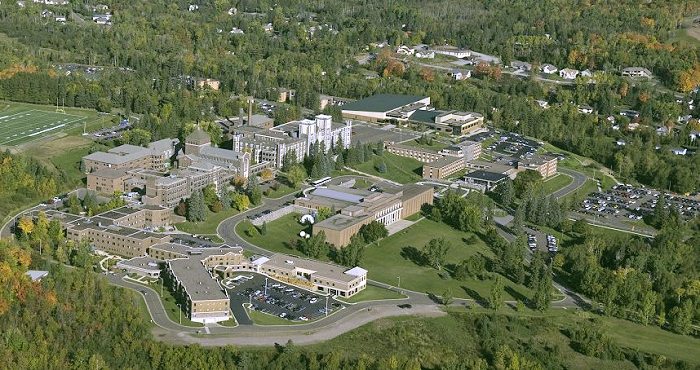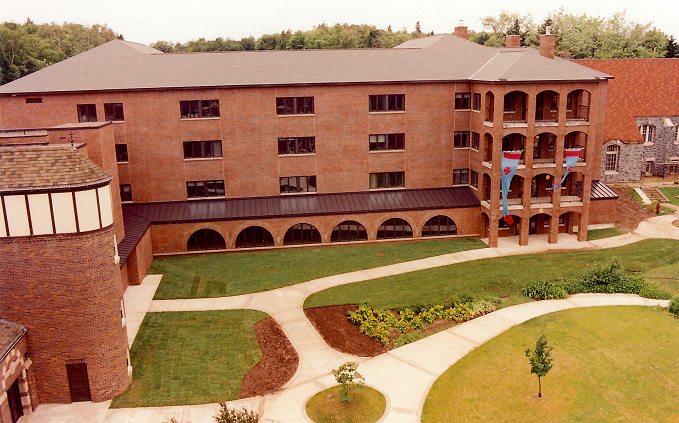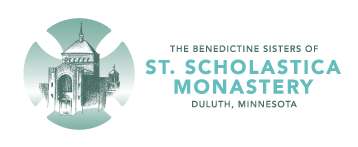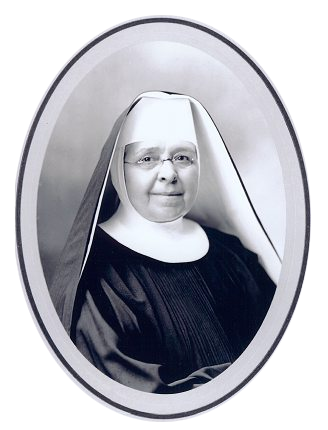
On Independence Day in 1852, three Benedictine nuns from St. Walburg’s Abbey in Eichstätt, Bavaria disembarked in New York Harbor. Mother Benedicta Riepp and two other Sisters were the first Benedictine women to emigrate to the United States. They would eventually create a whole new way of life for Benedictine women by accepting ministries outside the convent walls.
They began with a school for German-speaking immigrant girls in St. Mary’s, Pennsylvania. As their numbers grew, they established new foundations, among them St. Benedict Convent in St. Cloud, Minnesota in 1857. St. Cloud was a rough frontier town in an area that had been opened to settlement only six years earlier. In 1863 the Sisters moved to nearby St. Joseph. In 1881 the fourth prioress of that community, Mother Scholastica Kerst, sent Sisters to new ministries in Duluth, 140 miles to the northeast. By the end of that decade, Sisters were staffing several parish schools and a Catholic hospital in Duluth.
When the Diocese of Duluth was established in 1889, Bishop James T. McGolrick wanted an independent community of Benedictine Sisters for his diocese. In 1892, thirty-two sisters from St. Benedict’s chose to join a new foundation, headed by the once-and-future prioress, Mother Scholastica Kerst.
The history of the new Community and its growing ministries can be traced through its building projects. While continuing in all of the schools and hospitals previously staffed, the Sisters also opened Sacred Heart Academy for girls in Munger Terrace, a newly constructed block of apartments on Mesaba Avenue above the town. In 1894 they built their first permanent home in Duluth on 3rd Avenue East and Third Street, and named it the Sacred Heart Institute.
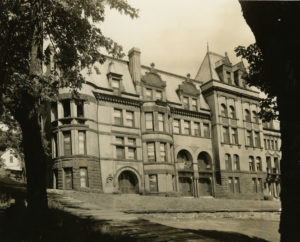
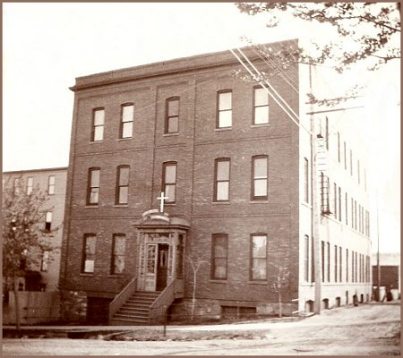
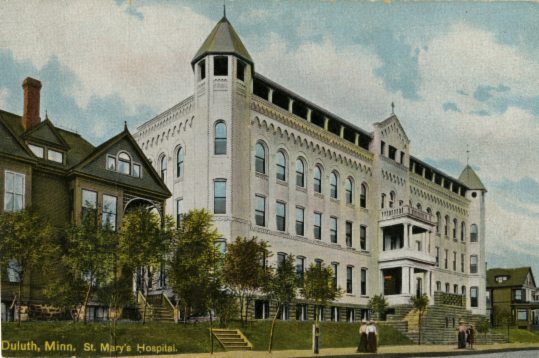
In 1898, they completed a new building for St. Mary’s Hospital on its present site. Over the next century, additions and demolitions adapted the original building to changing technologies in health care. The current structure no longer can be adapted to the needs of modern medicine, and a new hospital is under construction.
In 1899, eighty acres of foreclosed farmland in the Kenwood neighborhood came on the market, and the Sisters purchased it to build a motherhouse large enough for Sisters and students. Eighty adjacent acres were purchased by 1907, and construction began on the site. By the fall of 1909 the building was ready for occupancy by the Sisters and the students of “Villa Sancta Scholastica Academy.”
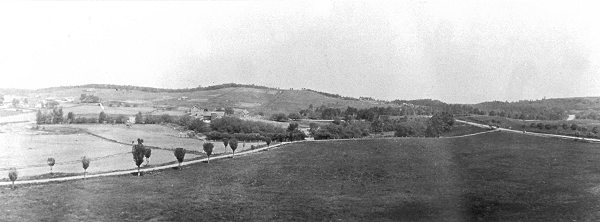
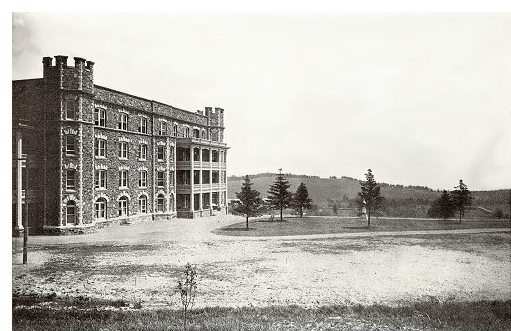
In 1912, they added a junior college division and, shortly after the end of World War I, a free-standing combination gymnasium and assembly hall. The main building was enlarged with a wing extension and a tower and renamed Tower Hall.
By 1924, the junior college had been expanded to four years and became The College of St. Scholastica. In 1928, Mother Agnes Somers completed the original plan for Tower Hall with an elaborate lobby, second tower, and new wing.
By 1930, the Community in Duluth had 300 members. An additional forty Sisters had left to create new Benedictine foundations in Winnipeg and Crookston. The Sisters owned and operated the College and hospitals in Duluth and Brainerd. They taught in 20 parish schools in Duluth, northeastern Minnesota, and Chicago. They also staffed an orphanage and a home for the aged in Duluth, and a boarding school for developmentally challenged girls in Washington D.C.
As the Community and College continued to grow, additional space was needed. By 1938 under Mother Agnes’ leadership, the Community built a combined library and chapel and a new girls’ high school, called Stanbrook Hall after a Benedictine abbey in England. Enclosed cloister walks across the front connected Stanbrook Hall, the Chapel, and Tower Hall.
Community numbers peaked in 1965 at 520 members. By that time, additional school missions had been accepted in Cincinnati, Minneapolis, and Phoenix as well as more parish schools in northeastern Minnesota and Duluth. Four Sisters were living in Antofagasta, Chile as missionaries.

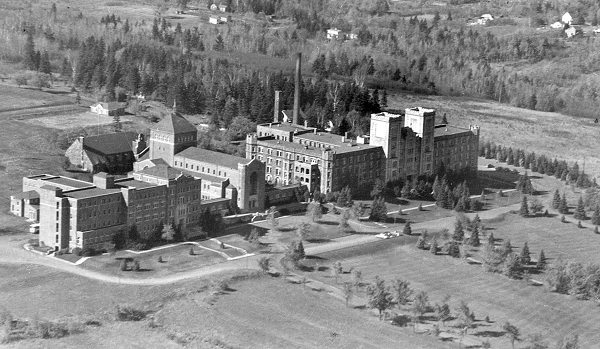
In the early days, the Community was known locally by the name of the site — Sacred Heart Institute or Villa Sancta Scholastica. When the community joined the Federation of St. Benedict in 1959 and became independent of the local bishop, its name was changed to St. Scholastica Priory, and in 1996 to St. Scholastica Monastery.
In the late 1960s, influenced by the cultural revolution and reforms of the Second Vatican Council, membership began to decline. Women found they could pursue careers in education and health care as lay people, and so fewer chose religious life. At the same time, many Sisters chose to leave the community. In Duluth, a new co-educational Catholic high school opened in 1963, drawing away most of our high school students, and so in 1967 Stanbrook Hall closed. The Sisters renovated the building as an interim motherhouse, leaving most of Tower Hall to the College. The second floor was remodeled to become Benet Hall, an assisted living center for infirm Sisters.
As Sisters retired from active ministries and returned home, more space was needed to house all the Community under one roof. In 1991 Stanbrook West was built as residence for about 70 Sisters, the first facility to be constructed for the exclusive use of the Community.
As the numbers of infirm Sisters continued to grow, the Community began construction in 1978 of the Benedictine Health Center (now called Benedictine Living Community of Duluth) next to Stanbrook. It opened in 1980 to both Sisters and laypeople, the first nursing home to include a daycare center for children. In time it added assisted living, independent senior apartments, memory care, and therapy and became the first of forty communities of the Benedictine Health System, one of the largest Catholic senior care organizations in the United States.
